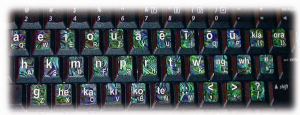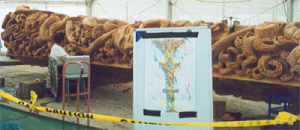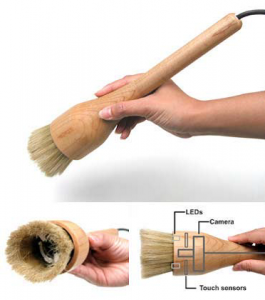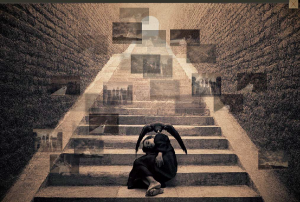The term is flying by like a soaring hawk! Module 3 exploration on decolonization and indigenous property rights has helped me understand better the power of storytelling. In this module, the Fraser River Journey video resonated with my research. Digital storytelling through videos is a very effective way to convey learning that is more intangible, such as characteristics of courage that was talked about and exhibited in the video. This is, by far, much more convincing than hundreds of pages worth of text-based communication alone.
Exploration #11 – Sacred Healing Stories Told at the End of Life
Tuck, I., Johnson, S.C., Kuznetsoya, M.I., McCrocklin, C., Baxter, M., Bennington, L.K. (2012).Sacred Healing Stories Told at the End of Life. Journal of Holistic Nursing, 30(2), 69 – 80.
This article explored the use of storytelling and its healing properties to patients suffering from cancer. The study indicates presence, active listening, contact or noncontact touch in storytelling have a potential positive effect on the wellbeing of suffering patients, through building stronger emotional support through connectedness with their shared experiences.
Personal Connections:
I think this article connects with what I have learned from this module with regards to stories being a great medium to convey emotions. This is an important part of life that I have found to be missing from education. Textbooks often do exceptionally well on delivering logical, sequential content, but completely lack the flexibility to individual exploration and interpretation with integration of the more human side of learning, which involved inner connection with the subject. The finding from this article, although not strong enough to say stories definitely has a healing effect, I do not think that it would be a disadvantage for us to include more in what we do.Personal Connections
Exploration #12 – Vancouver Society of Storytelling
http://www.vancouverstorytelling.org
The Vancouver Society of Storytelling is a member of the National Storytelling association. They support the art of storytelling through hosting workshops and monthly events. Due to the nature of the population in British Columbia, the Vancouver Society of Storytelling is also support storytelling in order to maintain cultural diversity. They provide toolkits to educators and students to help them engage in the art of storytelling.
Personal Connections:
I have not yet examined a storytelling society in my research that is local, so finding this website was definitely an exciting experience! As with the previous storytelling society explored, this one goes hand in hand with education. The fact that storytelling society is generally associated with the field of education, shows the important role stories play in teaching and learning. Interestingly, when I look back to my childhood, stories were often the lessons I remember most, aside from any sort of hands-on experience. In accordance, I have little memory of the years of school that I had from grade 1 to grade 4, where stories were not often use in the classroom. However, I do remember all the home teaching and moral of the stories told by my mother and my spiritual leader. As an instructor, I wonder how we could bring this traditional and holistic form of learning (back) into our classroom. I am curious to find out more about the toolkit the Vancouver Society of Storytelling has to offer.
Exploration #13 – Power of Stories
Terrence, L. G. (2006). Power of stories. The Journal for Quality and Participation, 29(1), 4-8.
Terrence outlined the power of stories in a corporate environment. The article promotes the use of storytelling would benefit both managers and their teams. Nine key functions of stories were outlined, they include:
- Stories empower a speaker.
- Stories create an environment.
- Stories bind and bond individuals.
- Stories engage our minds in active listening.
- Stories negotiate differences.
- Stories encode information.
- Stories are tools for thinking.
- Stories serve as weapons.
- Stories bring about healing.
The nine functions not only brings with it benefit to the team, but it could also be used to help heal a team that has gone under stress and pain from conflict. Stories allow sharing of experiences, which is an important factor in team building.
Personal Connections:
As an instructor in a corporation, I always wonder if there is a motivation for leaders to see the importance of the stories I tell in my classroom. Often, storytelling is seen as something one would do if time permits. However, this article summarizes the effectiveness of storytelling even outside of the education department. I still remember when I was selecting the topic of research for this course. I was having quite a bit of conflicted feelings not being able to bring direct value to my team as I did not see storytelling as a corporately appropriate topic. Yet, this article contains a good deal of reasons to include storytelling from a management point of view that has changed my view of my research.
Exploration #14 – Scheherazade’s Secret: The Power of Stories and the Desire to Learn
Willis, P. (2011). Scheherazade’s Secret: The Power of Stories and the Desire to Learn. Australian Journal of Adult Learning, 51, 110 – 122.
This paper presents how stories can help engage the minds and heart of a learner, rather than how stories can transfer information. The author outlined the four modalities of learning which can be supported by stories: ‘embodied sensations and feelings’, ‘imaginal’, ‘conceptual analysis and critique’, and ‘reflective action’. Willis argues that stories is a holistic view of approaching human pedagogy, as it does not force learning upon learner, instead, it provokes self reflection and brings about self-initiated actions.
Personal Connections:
I really enjoy reading this paper as the paper was written in a storytelling manner, which shows me directly engaging power of storytelling. Although I already view storytelling as a great way to deliver learning, I have not actually reviewed how stories can support human pedagogy directly. The way Willis presents his view connected with my view of education as a constructive process rather than a single-direction instructive process. The paper gives me much inspiration with regards to how I could structure my own research paper for this term.
Exploration #15 – Collaboration in Animation: Working Together to Empower Indigenous Youth
Davenport, M.G., & Gunn, K. (2009). Collaboration in Animation: Working Together to Empower Indigenous Youth. Art Education, 62(5), 6-12.
This article documents the experience Davenport and Gunn shared while they taught animation to indigenous youth in Mexico. The workshop hosted was a part of an effort in encouraging indigenous youth to value their tradition and culture, while developing skills that could help them voice their culture to the rest of the world. Davenport and Gunn expressed that they have changed their perspective as the program progressed. They mentioned that one of the most important skill in making this workshop work is actively listening to one another and be flexible to changes.
Personal Connections:
My exploration through this article was purely out of curiosity of how non-indigenous teachers could help indigenous students in voicing themselves to the world, as the production of Fraser River Journey video has intrigued me in wanting to find out how this collaboration works. I enjoyed reading through the two authors’ journey in Mexico, however, I wish there were some voices of the children included in this study. I guess this will form the more mainstream perspective of my research and I will continue to hunt for indigenous perspective in my next chapter of research!




